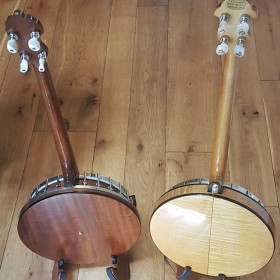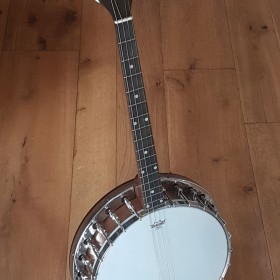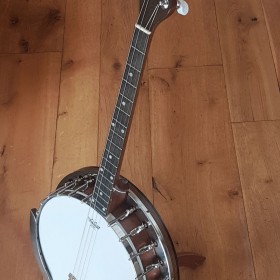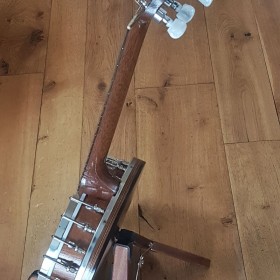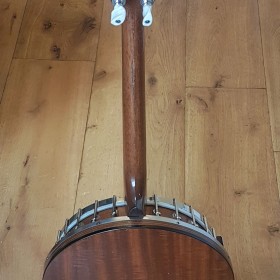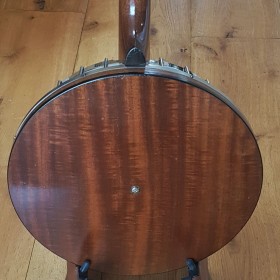SS Stewart Wondertone Style D
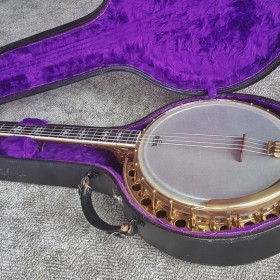
20190907_104401-01

Catalog

SSS-10-A
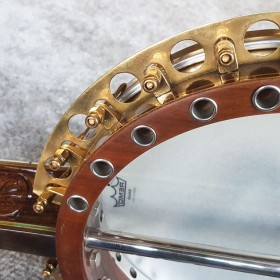
SSS-11
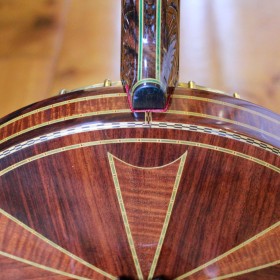
SSS-12
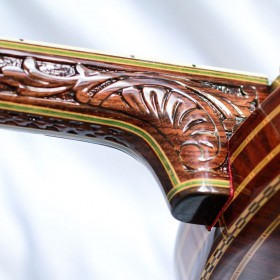
SSS-13
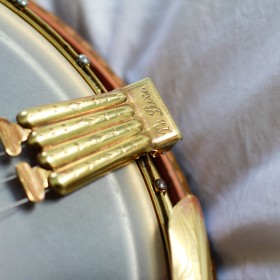
SSS-14
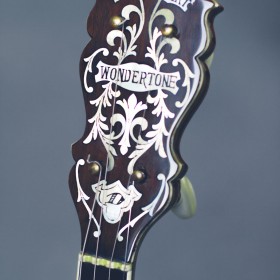
SSS-15
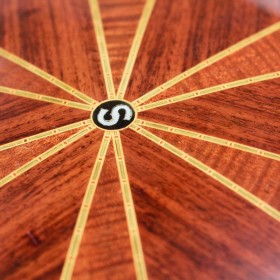
SSS-16
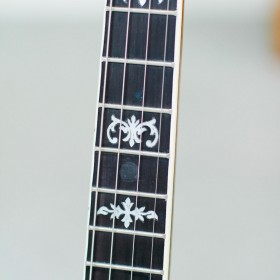
SSS-17
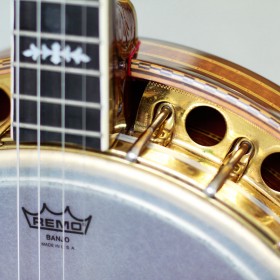
SSS-18

ss-stewart-01
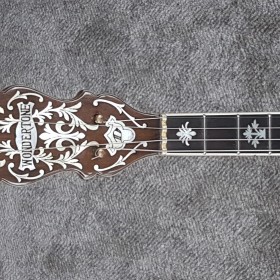
ss-stewart-02
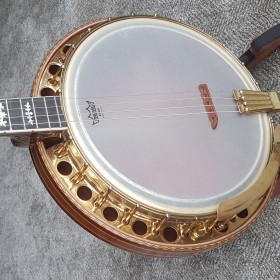
ss-stewart-03

ss-stewart-04
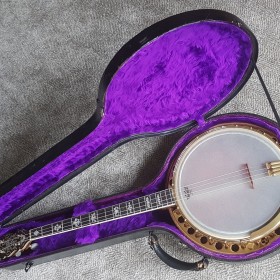
ss-stewart-05
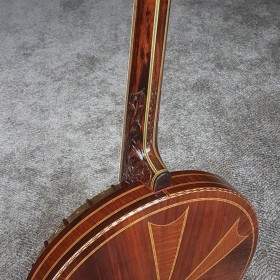
ss-stewart-06
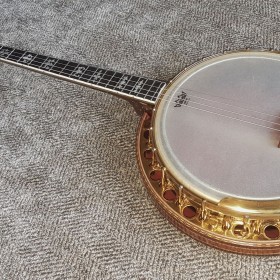
ss-stewart-08
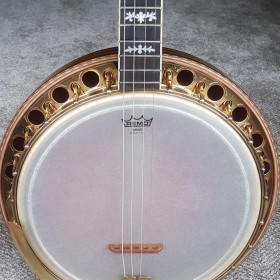
ss-stewart-09
A Little bit of history
The SS Stewart brand name appeared on a wide variety of instruments across the better part of a century. Samuel Swain Stewart began building banjos in 1878, and by the 1890s his company’s banjos were widely regarded as some of the finest on the market. Stewart died in 1898, and the brand he created underwent several changes of ownership over the next two decades. New York-based instrument distributors Buegeleisen and Jacobson purchased the S. S. Stewart brand in 1914; as they did not actually manufacture banjos, B&J sourced their instruments from a variety of builders. They also expanded the line to include guitars and mandolins, and the brand would survive (in one form or another) in the B&J catalog into the 1960s. During the 1920s and 1930s, S. S. Stewart instruments encompassed a range of prices and quality but generally represented the upper echelons of products sold by B&J.
The Wondertone series of tenor banjos were introduced in the 1920s and were locally sourced from New York City builder Gaetano Puntolillo. Known also for his own brand of Majestic banjos, Puntolillo created a range of high-end instruments that could compete with the big-name brands of the banjo world. The 1927 B&J catalogue showed four models, A through D, which shared the same methods of construction but employed a range of cosmetic features. The prices ranged from $80 to $280, which set them in direct competition with upper-grade Gibson and Epiphone models.
This Wondertone D sold for $280 which was the top of the line model. It features a maple rim and resonator with figured rosewood veneers all around and a 9-piece Brazillian rosewood neck with centre pearwood and maple laminates. This model incorporated an exquisite, beautifully carved heel. Gold plated geared tuners and fancy inlays in the fretboard and headstock. This particular model has a “S” inlayed in the resonator which I haven’t seen on other models. I have to assume that the specifications changed frequently, particularly during the 1930s when economics would have driven B&J to make their instruments as affordable as possible.
Tone ring features
The renaissance head is set on a heavy nickel ring close to the edge of the hoop. A 3/4″ – inch wide perforated nickel hoop set on the wood rim, but kept free to allow proper vibration and set under the head forming a 1″ bevel. The rim has 22 perforations, 1/2″ in diameter, and is connected with a perforated tone ring under the renaissance head forming a manifold tone chamber which enhances the volume of the tone. Attached to the outside of the rim is an additional metal perforated tone chamber, connected with a convexed extension overhanging built up resonator.
The banjo is in first class condition including the gold plated metal parts. As this is the top of the line ‘D’ model the tension hoop, skirt and flange are engraved. The arm rest is engraved as is the ‘Deluxe’ clamshell tail piece, the spring lever type which takes both loop and ball end strings, often found on the Epiphone Concert models.
Comes with a vintage case in excellent condition…
£2400
